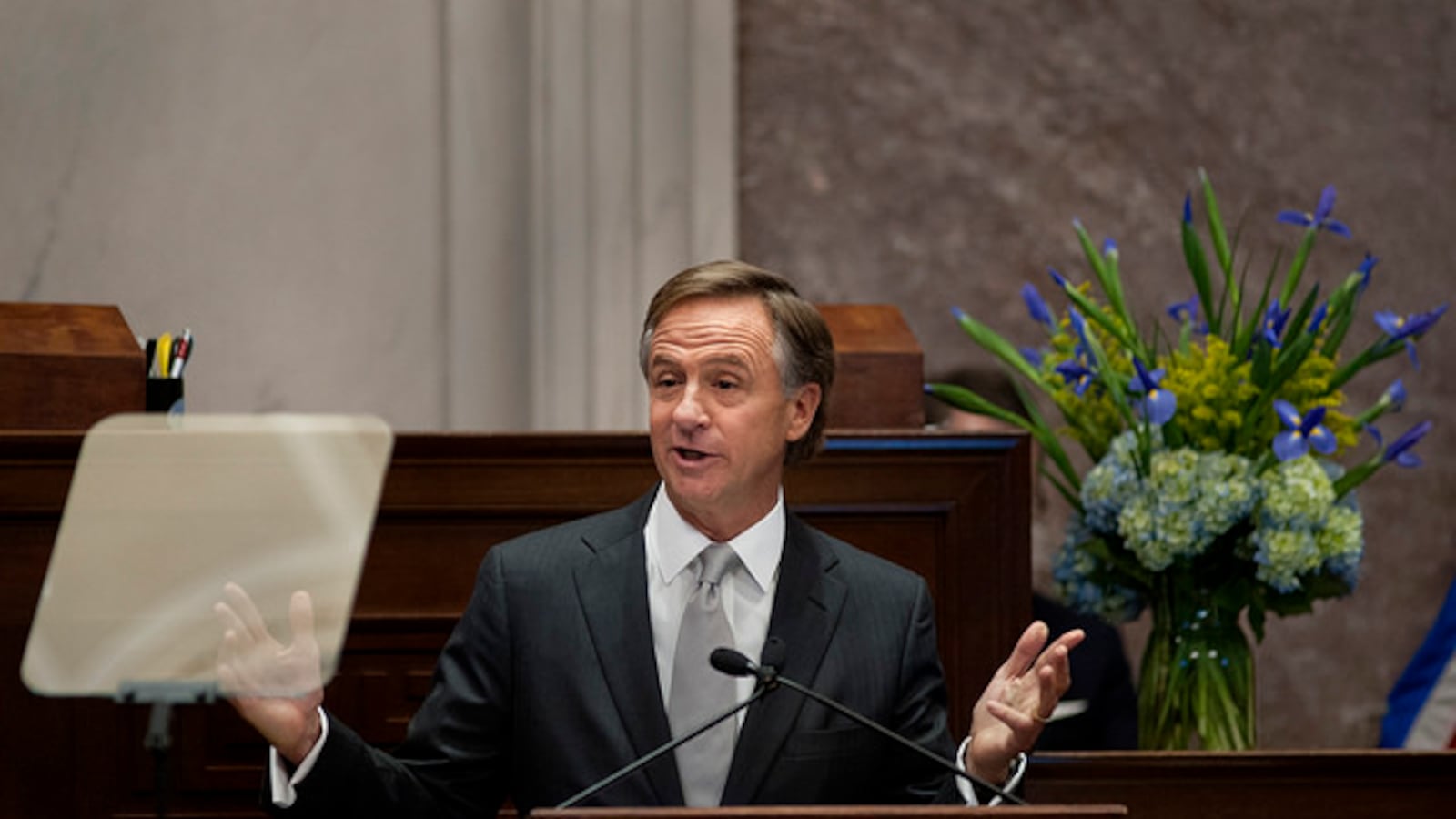Calling education a “smart long-term investment” amid a flush budget, Gov. Bill Haslam on Monday night proposed spending $400 million for K-12 education, including increases for teacher pay, technology, literacy programs and high-need student populations.
But he shied away from proposing lasting changes to the state’s education funding formula — the subject of two lawsuits filed last year by eight school districts charging that the formula is flawed or outdated.
In his State of the State address before lawmakers in Nashville, Haslam outlined his proposed $35 billion state spending plan for 2016-17 and continued his annual tradition of highlighting education since taking office in 2011. He choked up with emotion as he ended his speech describing his commitment to serve the state, which includes roughly 1 million students in Tennessee’s public schools.
“This budget proposal includes the largest investment in K-12 education in Tennessee’s history without a tax increase,” he said, adding that an investment in education will save the state money in the long run.
“A more educated population will spend less money on health care. Less money on incarceration. If we’re going to be about anything, it has to be about opportunity for all Tennessee students,” he said.
The proposed increase includes a 5.6 percent boost in allocations for teacher salaries, slightly more than the 4 percent salary bump that he initiated last year. He also proposed adding $40 million to address specific components of the state’s Basic Education Program, or BEP, which decides how much state funding each school district receives. Specifically, the governor wants to add $15 million to technology, $14 million for English language learner programs, and $5 million for special education. Haslam also committed to paying for all 12 months of teachers’ health insurance. Currently, the state only funds 11 months.
The impact of the increases would vary from district to district and is contingent upon the state’s funding formula and local teacher salary schedules. Last year’s increase in teacher salary expenditures didn’t budge many teachers’ paychecks.
Haslam’s spending plan also includes $9 million for a statewide literacy initiative that launches this month as school districts grapple with generally stagnant reading scores while seeing an uptick in math and science proficiency.
“Our students have shown incredible growth, but reading remains a challenging area that we have to get right,” he said.
Another $3 million would go toward professional development for math and English teachers as the state prepares to roll out revised academic standards that will reach the classroom by the 2017-18 school year. The governor hailed the state’s recent standards review as raising the bar of expectations “while much of the rest of the country is still arguing about what to do on Common Core standards.”
Haslam used his speech to enumerate reforms that he credits for moving Tennessee schools up from the bottom of national academic rankings.
“We’ve raised our standards. We’ve linked teacher evaluations to student performance. And we’ve expanded education options for children. … We are shrinking the achievement gap for historically underserved and low-income students,” he said.

Haslam’s spending blueprint now goes to the legislature, which will pass a final budget this spring. It’s uncertain whether lawmakers will concur with his proposals for carving up more than $700 million in surplus funds.
While Haslam wants to step up the state’s BEP obligation, he did not talk about the fairness or adequacy of the formula itself.
The BEP is at the heart of litigation filed by frustrated district leaders who charge that local governments are increasingly having to pick up the slack because, they say, the state isn’t providing Tennessee children with a basic education under its current formula.
One, spearheaded by Hamilton County (Chattanooga) Schools, focuses on teacher pay, while the other, filed by Shelby County Schools, charges that the state doesn’t provide enough resources to educate its most vulnerable students, including English language learners and special education students.
Both lawsuits seek more money than the governor is offering and likely will take years to litigate.

